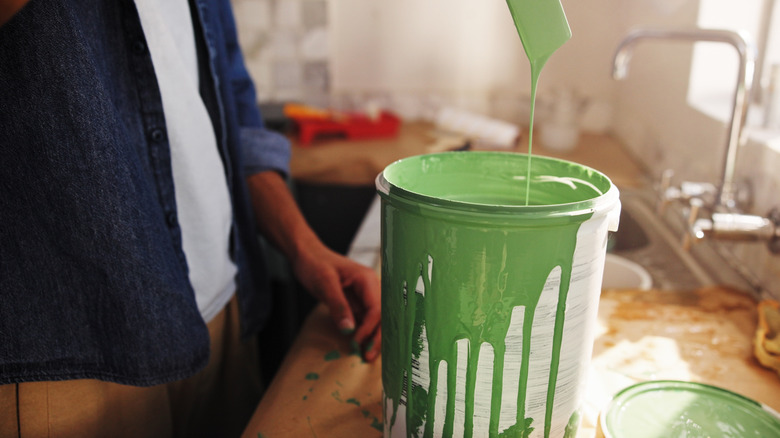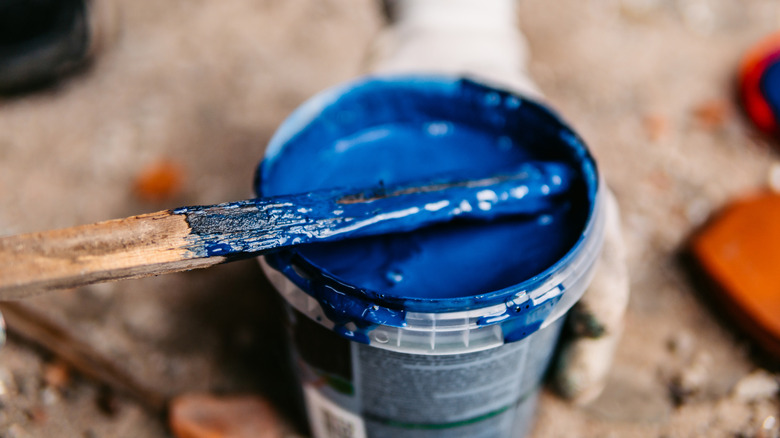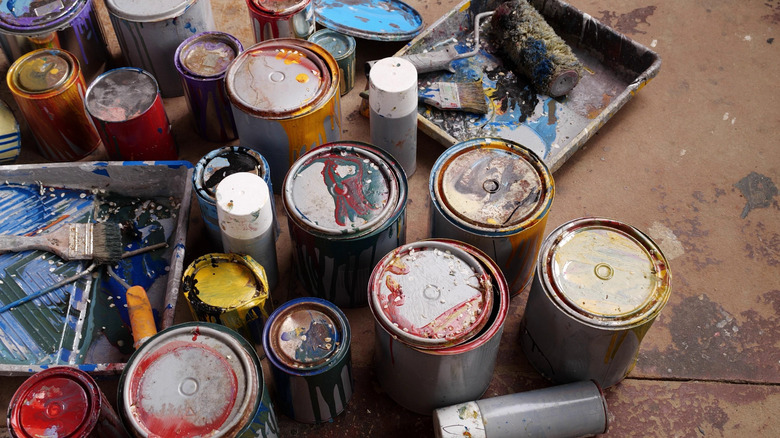How Long Is Paint Good For After Being Opened?
Imagine there is a spot on your living room wall that needs a paint touchup. You still have the can out in the garage from when you first painted your walls a few years ago, but is the paint still good? The short answer is yes, in most cases. If properly stored, opened latex- or acrylic-based paint can remain good for two to 10 years, and sometimes longer, while oil-based paint often holds up for two to 15 years thanks to its solvents. However, this longevity still depends on how it has been stored. Knowing how to store it, along with the factors that can shorten its lifespan, is key, as they determine whether you are ultimately saving money or just storing a can of unusable gunk.
The main enemy of any paint is air exposure, and that begins the moment the lid is lifted. Even small gaps from a poor seal let air in and cause liquid components (water in latex paint, and solvents in oil-based) to evaporate. That leads to thickening, skinning, and potential outright failure. This is why proper sealing is paramount; each time you use a can of paint, you need to wipe the rim clean of all residue before the lid is tapped shut again. And just as destructive to stored paint is temperature fluctuation. Storing paint in place without any climate control, like garages or attics, exposes the product to extremes that can ruin it. For latex paint, freezing breaks down the emulsion, causing the components to permanently separate. Likewise, excessive heat speeds up the evaporation and curing process.
Three checks to see if your leftovers are still good
Before you stir up that old can and start painting, you gotta check that the paint is still in good condition. And fortunately, testing is easy. All you need is a three-part inspection: look, stir, and smell. If your paint passes these tests, it's ready for the touch-up; just avoid these mistakes everyone makes when painting their home.
Start with the look test, and open the lid. It is common to see a thin skin layer on the surface, especially if it hasn't been opened in years. This skin forms when the paint reacts with any residual air in the can. If the layer is thin, carefully lift and remove it; if the remaining paint looks mostly uniform, it passes the test. If the paint is thick, chunky, or grainy throughout, you're out of luck. If it did pass, move on to the stir test. Use a clean stick to mix the contents, and if the paint smoothly recombines into a consistent, uniform texture, that's a good sign. If it's lumpy, gritty, or resists mixing, it has likely passed the point of no return.
The final (and most important) step for latex paint is the smell test. If the paint has been contaminated somehow, bacteria or mold can be introduced. Spoiled paint has a distinct foul odor, described as sour, rancid, or like rotten eggs or cheese. Oil-based paints, conversely, generally just have a stronger solvent smell. If your paint passes all three tests, scoop out a small amount and apply a test patch on a scrap piece of material to verify the color and consistency before starting any touch-ups.
Maximizing shelf life and proper disposal
If your paint passes the usability tests, you can take a few proactive measures to help it last even longer in case you'll need more touch-ups down the line. One of the best ways to extend paint's shelf life is to reduce the amount of air contact. So instead of keeping a little remaining paint in the large original can, transfer it into a smaller airtight container like a mason jar. This minimizes the air space above the paint and slows down the oxidation and drying process. And of course, label the new container with the color, brand, and transfer date so you can easily find it again for other touch-ups and clever ways to repurpose leftover paint.
Regardless of the container, though, the storage location is key. Always keep paint in a dark, dry, temperature-controlled area, like a closet, utility room, or basement where temperatures stay stable year round. Consistent cool (but not freezing temperatures are best for preserving the chemical composition of both oil and latex paints.
Finally, know how to properly handle unusable paint. Spoiled, chunky, or dried-out paint is considered hazardous waste and should never be poured down the drain or thrown out with regular trash. For small amounts, allow the paint to totally dry out (often by mixing it with kitty litter) before disposing. For large amounts, check with your local municipality or waste management service for official hazardous waste collection sites or disposal events. By following these easy storage and disposal steps, you can maximize how long paint lasts in the can.


